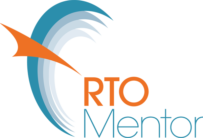Your initial application or your re-registration application MUST include a business that sets out your Business objectives, Analysis of the market, Basic SWOT and Financial projections for the next 12 and 24 months.
Starting and running an RTO, as in any other business is hard work. The more preparation you do before start up, the better your chance of avoiding financial and personal heartache. Take the time out now to do the research, the planning and grow the foundations. It will hold you in good stead later down the track. For your RTO to succeed, it is important to fully understand what it takes to start, run and grow.
Planning helps to establish how you will stand out from the crowd.
This preparation is not only needed for your planning but also for your initial audit through a business plan complete with financial plans/projections.
Think of the reasons for your successes to date. You’ll probably come up with a series of traits that are uniquely yours and characteristics that other RTO’s can’t begin to duplicate; because they are yours. That’s why you’ve decided to become an RTO.
Planning equals better results, better targeting and will help minimise any problems you may encounter. Paint a picture with words that brings to life how you will get your business started and how you will continuously grow and improve it for the next three to five years.
Starting the Business plan
The Business plan is a summarised version of all the planning you have undertaken. Evidence of your planning for the RTO could include:
- Your initial assessments / SWOT analysis (strength, weaknesses, opportunities and threats)
- Literature review (the review of all the information required to meet compliance for your RTO)
- Strategic planning
- A Vision Statement: This will be a concise outline of your business purpose and goals.
- Your Business Profile: Define and describe your intended business and exactly how you plan to go about it. Try to stay focused on the research you have done and the specialised market you intend to serve.
- Intention of implementation and monitoring
From the discussions with your client, you can begin to ascertain their learning needs. Some questions that can help you work this out are:
- Why does the client need your help?
- What is the business reason for the training?
- What do people want to have after the training that they don’t have now? What competencies and behaviours can be changed to close the gap?
- What are the client’s requirements and priorities?
- What are the client’s constraints? (For example, budget, timelines or location.)
- Are there any other stakeholders? If so, who are they?
- What is the target learner group for the training and/or assessment?
- Where is the target learner group located?
- What is the skill or knowledge that needs to be learnt and/or assessed?
Use your business plan to guide you on your journey and make sure you can submit a quality application. Show the registering body you can achieve your goals and the plan for reaching those goals.

